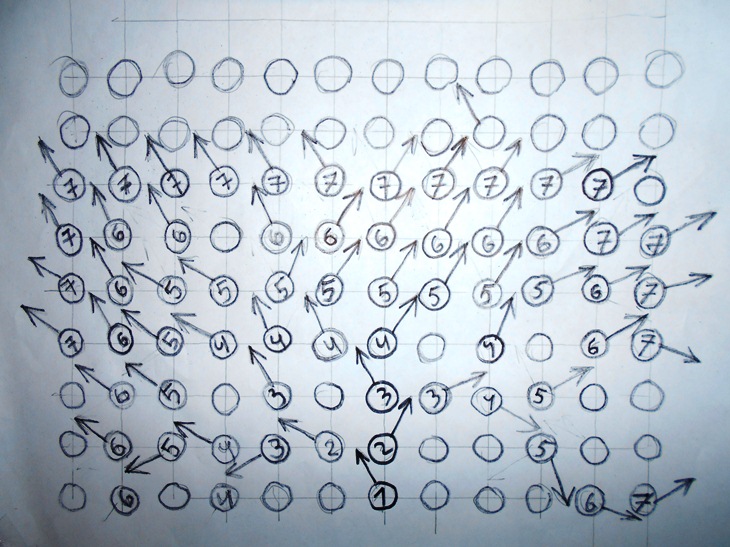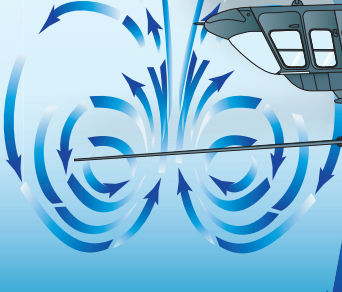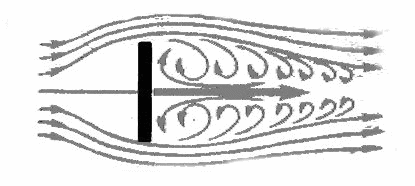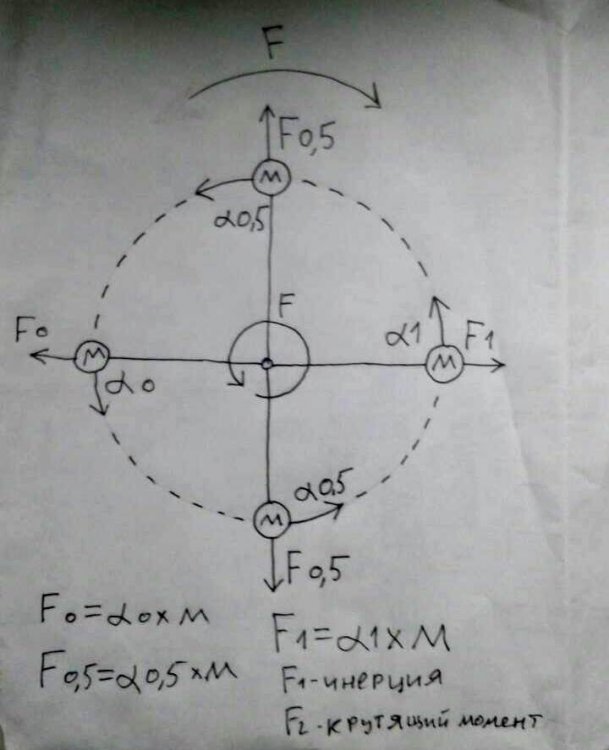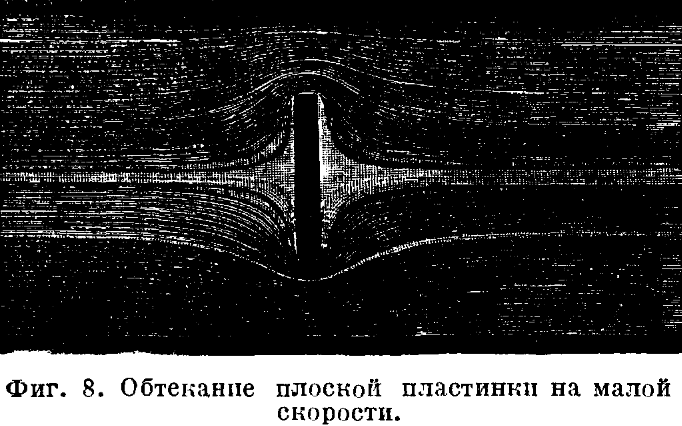-
Posts
68 -
Joined
-
Last visited
-
Days Won
1
Content Type
Profiles
Forums
Events
Everything posted by MasterOgon
-

Flying saucer. Picture, project of a spacecraft
MasterOgon replied to MasterOgon's topic in Speculations
I know about saving momentum. Energy can not come from nowhere. In order to understand the process it is necessary to understand the principle of the movement of water or gas. Let's consider the following model. What is a substance (eg water) Atoms or molecules of a substance are equally spaced from each other. The forces of their mutual attraction and repulsion are balanced. And the substance is at rest. A structure in which the distances between points are equal will look like equilateral triangles. They in turn turn into hexagons. To a certain extent, this corresponds to the structure of water in a calm state. Like a snowflake. Suppose that if you apply a force to one of the atoms, then its movement is possible only along the path of least resistance. This property also has a water. Now look at the picture. We push atom 1 and the arrows show the direction in which the energy transfer of this impact is possible. It's like in billiards. We see that part of the water resistance force goes in a circle and comes back to us from behind. And the energy that does not return to us is distributed evenly in a circle. This construction is a purely logical problem. But it corresponds to the process that exists. The role of inertia here is that this process takes place for a certain time. Atoms are pushing each other in turns and we get a blow from behind when we forget that we were pushed forward and returned to the starting position. If we consider this on the example of a square-shaped crucifix, we will get a completely different picture, which will also correspond to the real one. For example, if we hit the metal. It seems that when science lacks data, conduct research -

Flying saucer. Picture, project of a spacecraft
MasterOgon replied to MasterOgon's topic in Speculations
I understand that this conversation has stalled. The problem is that all denials are based on incomplete information. And to find a reliable source with the missing information, to use it as an argument, is impossible or very difficult. This argument is that the environment (water or air) continues to move by inertia after it gets accelerated. This is because every atom of air or water has a mass. Is this speculative information? It turns out that the concept can not be proved due to the fact that I can not find a link to a simple fact. All my explanations are meaningless without this fact. -

Flying saucer. Picture, project of a spacecraft
MasterOgon replied to MasterOgon's topic in Speculations
The flow of air that creates the force occurs around each individual blade. But this is not written To describe the work of the saucer you need to understand how a whirlwind forms in the air and why it continues after it has been created. This should be considered at a more complex level. I just have no time to think it over now. -

Flying saucer. Picture, project of a spacecraft
MasterOgon replied to MasterOgon's topic in Speculations
I told you that you will not find confirmation of this data anywhere. I have a clear interpretation of the results of the experiment. The saucer pushes away from the air. I described how this happens in all possible ways and well-known analogies. With the help of the experiment, you can make sure that this happens, and understand exactly how. If there is no concept of "inertia of the air flow", does this mean that the air cannot move by inertia? I think the result of the experiment is more important than any reliable sources. The wind tunnel was thought for good reason. The process I'm talking about is happening near the aerodynamic plane. This example is great. Even if the saucer will have the shape of a helicopter blade. -

Flying saucer. Picture, project of a spacecraft
MasterOgon replied to MasterOgon's topic in Speculations
Ring vortex can be created in other ways. The example with a helicopter is more complicated than it is required for a plate. It only shows that such a vortex can create a tangible force for some time. But it’s better to look at the following example. "A vortex ring usually tends to move in a direction that is perpendicular to the plane of the ring and such that the inner edge of the ring moves faster forward than the outer edge. Within a stationary body of fluid, a vortex ring can travel for relatively long distance, carrying the spinning fluid with it. " This means that regardless of how it appears, a vortex is a mass of air that can move, and therefore move an object. "One way a vortex ring may be formed is by injecting a compact mass of fast moving fluid (A) into a mass of stationary fluid (B) (which may be the same fluid)." This means that you can create an annular vortex by giving acceleration to the air simply by pushing it. https://en.wikipedia.org/wiki/Vortex_ring Oppantion of how the saucer pushes the air upwards and creates a ring whirlwind underneath you will not find anywhere else. This cannot be verified by a reliable source. Only experimentally. Based on the available information, we can assume the following. When gas or liquid flows around a circular plate, turbulence forms in the form of a vortex ring behind it. When the plate stops, a whirlwind closes. You may find it easier to find it in English. https://videouroki.net/razrabotki/konspekt-uroka-po-fizike-obtekanie-tel-podemnaya-sila-kryla-samoleta.html -

Flying saucer. Picture, project of a spacecraft
MasterOgon replied to MasterOgon's topic in Speculations
I'm just doing this. The car really makes a lot of unnecessary movements, because of which it is more difficult to understand. Not a very good example. About the model. There is an article from Wikipedia, in which it is written that this phenomenon is formed and established during a sharp drop in the helicopter. (This is the same as a sharp movement of the plate up. Only the top is kicked.) But there is no explanation for what principles this happens. Whirlwind is still an open question in science. Or at least on Wikipedia: Air vortices can form around the main rotor of a helicopter, causing a dangerous condition known as vortex ring state (VRS) or "settling with power". In this condition, air that moves down through the rotor turns outward, then up, inward, and then down through the rotor again. This re-circulation of flow can negate much of the lifting force and cause a catastrophic loss of altitude. Applying more power (increasing collective pitch) serves to further accelerate the downwash through which the main-rotor is descending, exacerbating the condition. https://en.wikipedia.org/wiki/Vortex_ring I can not imagine how I can describe this phenomenon mathematically. I can only say that the vortex is formed due to the properties of the substance and lasts by inertia. How is my theory worse than the theories of other scientists who called all that they could not understand as dark matter? My theory is even confirmed experimentally. But I think about how this happens. I assume that the air in a quiet state (without taking into account the Brownian motion) can be represented as particles that are at equal distance from each other. At the same time, the forces of attraction and repulsion between them are balanced and such a medium is completely homogeneous. Can this be applicable to air to simplify? -

Flying saucer. Picture, project of a spacecraft
MasterOgon replied to MasterOgon's topic in Speculations
And why does this car cling to the ground when it lowers the wing? According to your statements, he should bounce. This device clearly refutes the theory according to which the rise of a bird is due to the fact that its wing area is smaller during its upward movement. -

Flying saucer. Picture, project of a spacecraft
MasterOgon replied to MasterOgon's topic in Speculations
I thought that the principle of flight of birds is already known to all. I saw about this telecast on a natural geographer but I do not know how to find it. And but I have to prove to you what is already known. Perhaps this is new information and it is difficult to find. Perhaps you should study this issue in more detail if you want to reasonably refute the design of the saucer. Unfortunately I could not find that movie. Following your ideas, in this video the fluff should fly back and not after the bird: https://youtu.be/d_FEaFgJyfA?t=154 -

Flying saucer. Picture, project of a spacecraft
MasterOgon replied to MasterOgon's topic in Speculations
The examples I give are excellent. You just do not take into account some of the points about which I speak. In order to derive an exact mathematical model of saucer movement, one must be a good scientist and delve into different areas of knowledge. Therefore, so far I have it. But I have the result of the experiment, which I already understand. But the argument about this is still useless. Something I could already assume to describe the formation of a vortex by an exact model. I'll write about it later. -

Flying saucer. Picture, project of a spacecraft
MasterOgon replied to MasterOgon's topic in Speculations
The movement of air at the same time will resemble what happens during a nuclear explosion above the ground, when the shock wave propagates only upwards. The air filling the space goes upward, following the wave, raising a column of dust. Similarly, this air can lift a saucer. -

Flying saucer. Picture, project of a spacecraft
MasterOgon replied to MasterOgon's topic in Speculations
We walk in a circle. The initial impulse is obtained according to this scheme: A scientist can push a spoon using his weight. At the same time, it can be in zero gravity and not be in contact with anything else except tea. The question is how the liquid or gas will behave when this effect is exerted on it. Let's look at the bullet example. This is more visual. When the bullet flies, it is affected by the resistance of the air you are talking about. But what will happen if the bullet stops abruptly? It can be assumed that the compressed air in front of the bullet will begin to fill the area of low pressure behind it. And then the bullet will fly back into the gun. Then, according to your calculations f bullet = f air resistance and total f = 0. But I doubt it. You do not take into account the fact that gas molecules have the energy of a bullet. By inertia, they will transmit this energy to each other, and the shock wave will spread further. And after it the area of reduced pressure will spread. And the bullet will be in the area of reduced pressure. This will be filled with calm air around the low pressure area. And since the low pressure will move forward after the wave, this will cause the wind to follow the wave and push the bullet further. -

Flying saucer. Picture, project of a spacecraft
MasterOgon replied to MasterOgon's topic in Speculations
I wanted to say mass and not the center of mass. This process can be seen in a cup of coffee when there is foam. If you make a movement with a spoon, then two vortices form behind it. When the spoon stops, whirlwinds will create a current that will push the spoon further. -

Flying saucer. Picture, project of a spacecraft
MasterOgon replied to MasterOgon's topic in Speculations
I meant that it does not work as indicated in the patent. And it works the opposite way. I also thought at first that she should quickly push the air down. But got the opposite effect. If you compare with the pool, it looks like this. You give acceleration to air or water by an effort forward, due to the displacement of its center of mass. But at the same time do not move anywhere. Water pushes you back, and if you hold the center of mass in place with an effort, then you start moving. If in a swimming pool water flows in a circle because of its shape, then in open space it forms whirlwinds. And it turns out the same thing - you push her forward and she catches you from behind. The plate strongly pushes the top of the air by shifting its center of mass with acceleration, and then the air pushes it from the bottom, when it returns the center of mass back slowly. -

Flying saucer. Picture, project of a spacecraft
MasterOgon replied to MasterOgon's topic in Speculations
On such a device, even issued a patent. http://puti.dp.ua/nepoznannoe/3585.html But in practice it does not work. If we consider the resistance of water as a force opposite to motion, then it turns out that when you mix tea and stop it abruptly, the resistance of water begins to push the spoon back with the same force. Do you often it happens? -

Flying saucer. Picture, project of a spacecraft
MasterOgon replied to MasterOgon's topic in Speculations
The mistake is that water resistance is considered as spring resistance. This is only partly correct. But in practice it means that the ship is not in the water, but in jelly, which returns to its original position after the impact of the force on it ceases. In reality, the water in front of the ship is crowded out and takes up the space behind it. Water should be considered as a system of molecules that alternately impart momentum to each other over a certain time. -

Flying saucer. Picture, project of a spacecraft
MasterOgon replied to MasterOgon's topic in Speculations
Maybe I can contradict myself all the time, because I don't know physics well. The book is nothing about the inertia of water. The movement of water that pushes the ship I discovered experimentally The fact that such a system can move in the water has been repeatedly proved experimentally. In the Russian Wikipedia says inertial propulsion drive comes into motion in the water due to viscous forces of friction. I don't need to prove this to everyone.https://ru.wikipedia.org/wiki/%D0%98%D0%BD%D0%B5%D1%80%D1%86%D0%BE%D0%B8%D0%B4%D1%8B This means that such a system can be set in motion in the air due to the same viscous forces of friction. If will be sufficiently effective. But there is no detailed description of exactly how this happens. In the article I gave my description of how this happens. I will try to understand this in more detail and find a more complex explanation. -

Flying saucer. Picture, project of a spacecraft
MasterOgon replied to MasterOgon's topic in Speculations
Whether the saucer can fly using this force is another question. If the force is greater than gravity, it can. So far, we are arguing about whether it is at all. -

Flying saucer. Picture, project of a spacecraft
MasterOgon replied to MasterOgon's topic in Speculations
I don’t know how to find it in English, but I think that by looking at the picture you will understand the weight. This is a theorem on the change of momentum. From the school textbook. It says that when the car moves in front, the ship moves back. But after stopping the car, the ship starts moving forward due to water resistance. http://varipend.narod.ru/new_forum/image/butenin/zsi_boat_avto.png I don’t know how to find it in English, but I think that by looking at the picture you will understand the weight. This is a theorem on the change of momentum. From the school textbook. It says that when the car moves in front, the ship moves back. But after stopping the car, the ship starts moving forward due to water resistance. Compared to my theory, this is even the opposite result. And I am not going to disprove it. Especially since the amount of movement in contrast to your calculation is already changing .. In this theorem, the process is not fully described. When the ship receives water resistance, some of this force goes to push it back. But at the same time he sets in motion a considerable mass of water. It forms a current which by inertia lasts for some time. This current carries the ship. There is nothing about the inertia of water or air in Wikipedia. Turbulence there is viewed as a process created constantly. But here's a simple example - run your hand in the water and remove your hand. After your action is complete, the movement of the water will still remain. Imagine, I need to derive a new theorem to describe this process. This system can be viewed as the interaction of 3 solids - ship, car, and reservoir. Then the ship with the machine will push off from the reservoir, because the water has a large mass. -

Flying saucer. Picture, project of a spacecraft
MasterOgon replied to MasterOgon's topic in Speculations
Let's look at this process. It creates a strong wavelength forward and a weak back. Waves move by inertia and become relatively a constant force counteraction. Where does the difference between weak and strong waves go? Thank you for the proposed formula. It will take me a long time to figure it out. -

Flying saucer. Picture, project of a spacecraft
MasterOgon replied to MasterOgon's topic in Speculations
That's right. The movement of the saucer up creates a force that presses it. But there is one important point that you do not take into account in time. This is the inertia of the air flow. I can’t back it up with a link, because there is none. This can be proved only experimentally. And the experiment with the ship shows it clearly. Moving upward, the saucer creates in the air areas of low and high pressure, which it is pressed. What are you talking about. But then, trying to restore balance, the air begins to move from the zone of high pressure to the zone of low. It is this process that makes the wind, which pushes the saucer, while it makes the movement down. And the wind continues by inertia after the saucer has ceased to create a pressing force, and began to create the opposite. It should be borne in mind that the kinetic energy of the mass, which drives the saucer more when moving to the top and less when moving down. At the same time, the force of the wind is opposite, because it comes after the movement that caused it. Imagine a car that drives on the highway, and after it all the garbage flies in the vortex that it creates. If the car stops abruptly, the moor will hit the car from behind. If he starts moving backwards, he will have to resist the wind he created. You can take an umbrella and stick it up. When you stop moving, you will feel the wind that you created with this movement. And about friction. It is different when moving back and forth due to the fact that at different speeds air flows around the body in different ways. When an impulse is at the top, a zone of calm forms under the plate, and it breaks through the air like a bullet. And when moving down the air flows around it smoothly like a parachute. -

Flying saucer. Picture, project of a spacecraft
MasterOgon replied to MasterOgon's topic in Speculations
OK. Friction is a very complex concept, as I understand it. It can be atomic, molecular, and so on. In this case, how to understand the friction of solid metal about soft? The metal has a certain viscosity, and if it is cut with a sharper object, then spiral-like chips are formed, resembling a whirlwind in a liquid or gas. I will begin the explanation first, because there is confusion. The principle of motion of a flying saucer can be described as repulsion, in which one body gives acceleration to another, and receiving opposition from the force of inertia of another body, accelerates itself. I have not found any explanation of what repulsion is. Perhaps this is a jet propulsion. Consider the engine as a system of two interconnected bodies that repel and attract each other. At the same time, their common center of mass remains in place. If during their repulsion a force acts on one of the bodies to resist its movement, then the other body, according to the law of conservation of energy, moves further. And the common center of mass of two bodies shifts. Thus, the system comes into motion. Thus, it is repelled by the force resisting the movement of one of the bodies. In order to obtain this resistance force in the air, we make one of the bodies in the shape of a sphere so that it is streamlined, and the second is given a plate shape so that it experiences maximum air resistance during movement. When these 2 bodies repel each other in the air, the plate gets more resistance and moves a shorter distance, and the ball gets less resistance and moves a greater distance. And the whole system moves. If the bodies are pulled back at the same speed, then we get a car with an umbrella, and the system returns to its original position. But if the bodies are attracted with greater speed, then as a result of acceleration, their mass and kinetic energy becomes larger, the plate gets more air resistance. But at the same time, the plate transfers its energy to the air, and the air around the plate begins to move in the direction in which it pushed it. The movement of air by inertia continues even after the plate has ceased to push it. A wind is formed which pushes the plate like a sail. At this time, the plate is slowly attracted to the ball, creating a force directed against the wind. The energy of the plate, and the force that it creates in this case is less than that which it gave to the air by the previous action. As a result, the air flow drives the entire system. Thus, the original two-body system is repelled by the wind, exerting pressure on it from one side. Similarly, this system works in space, starting from the solar wind, if the plate is a sail. Since the solar wind creates the sun, there is no need to create it. Due to the fact that the speed of the light wave is greater than the speed of the system, the light waves constantly put pressure on it from one side and it can keep pushing away from them until it reaches the speed of light. Perhaps, having pushed off from the light one last time, and not having received resistance to moving forward, it will exceed the speed of light as much as it can push off. All other earlier processes - waves, turbulence, friction, this is a consequence of the repulsion process. -

Flying saucer. Picture, project of a spacecraft
MasterOgon replied to MasterOgon's topic in Speculations
OK. Friction is a very complex concept, as I understand it. It can be atomic, molecular, and so on. In this case, how to understand the friction of solid metal about soft? The metal has a certain viscosity, and if it is cut with a sharper object, then spiral-like chips are formed, resembling a whirlwind in a liquid or gas. I will begin the explanation first, because there is confusion. -

Flying saucer. Picture, project of a spacecraft
MasterOgon replied to MasterOgon's topic in Speculations
In any case, the ship sails. Perhaps static friction from all sides and dynamic with only one. If the object overcomes the static trenet that is rendered to it from all sides, will it become dynamic? This is from the Russian Wikipedia: Physical model The principle of action of inercoids lies in the fact that their purposeful movement is caused by the difference in friction force in the support in the case of direct and reverse half of work. With dry friction, resistance to slow motion exceeds fast resistance (with one half-cycle, when a small force is applied, the friction force at rest is not overcome and the device remains in place; with the reverse semi-cycle, the friction force is overcome, the device moves). In liquids, on the contrary, resistance to fast motion prevails over resistance to slow motion. The explanation of the effect in liquids is fundamentally different (since there is no static friction force in liquids and gases) and is based on viscous forces of friction. Thus, the stated possibility of moving without interaction with the external environment is denied - interaction with the environment occurs through friction (this is proved by experiments with inercoids on torsion weights, when directional motion does not occur [2]; not happening). https://ru.wikipedia.org/wiki/%D0%98%D0%BD%D0%B5%D1%80%D1%86%D0%BE%D0%B8%D0%B4%D1%8B -

Flying saucer. Picture, project of a spacecraft
MasterOgon replied to MasterOgon's topic in Speculations
Thank you for these questions. Since I am very far from the exact sciences, for me it is a very difficult task. But I will think about it. I think you can find the answer, because the boat is still floating. And the counter question. Is there any difference between static friction and dynamic? After all, the atoms of solids are also not very static. For example diffusion. And vice versa - is a shock wave gas that destroys a stone? -

Flying saucer. Picture, project of a spacecraft
MasterOgon replied to MasterOgon's topic in Speculations
I do not understand it. Can you explain differently? A weak draft will certainly not lift a metal saucer. This should be a powerful shock wave.




